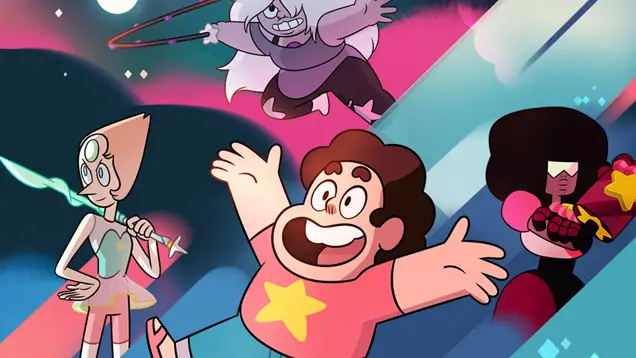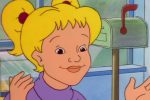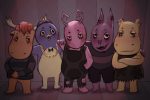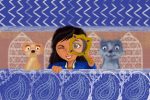5 Reasons That Kids Shows Are Better Now
There’s still hope for your younger siblings.
By Carla Aravena, University of Massachusetts at Boston
For people who grew up in the 90s, there seems to be a strange unwillingness to let references from their favorite childhood shows die.
You really won’t have to go far to find a college student cracking a Spongebob Squarepants joke. It makes sense—these shows make up a significant part of their memories and, as a result, have become incredibly nostalgic.
However, having this mindset comes with its share of problems and has definitely tainted the judgment of new shows aimed toward children. By holding up past shows to such a high standard, many have failed to notice the great things that new shows are doing and presenting to younger generations.
1. Racial Representation
Few would argue that seeing actors and actresses on television that are the same race as the viewer is important for children, especially considering the amount of time they spend absorbing media.
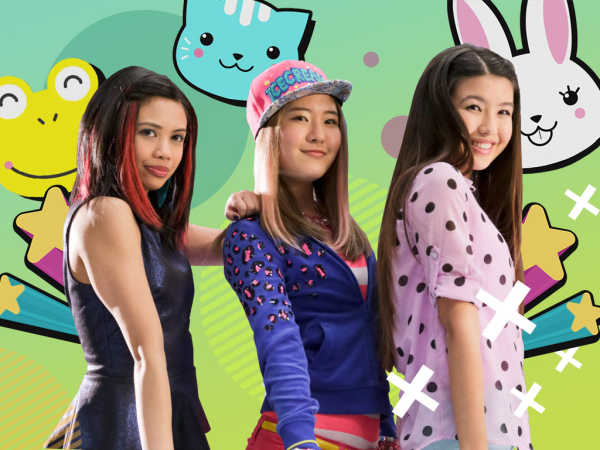 By identifying with a character who exhibits positive characteristics, children can feel confidence in themselves and become less likely to believe their race is inferior to others.
By identifying with a character who exhibits positive characteristics, children can feel confidence in themselves and become less likely to believe their race is inferior to others.
Unfortunately, the proportion of minority characters to white characters is still, even in 2016, undeniably skewed; the media remains mostly populated by white faces. Conversations on this issue frequently arise, and in fact arose just three weeks ago when the Oscars revealed that no black actors or actresses were nominated (see #OscarsSoWhite).
Fortunately, newer children’s shows may be turning the tides to a degree. In 2014, Fusion.net found only 3 out of 100 network television shows had main characters of Asian-American descent.
In April of 2015, Nickelodeon premiered Make It Pop, a show centered on three Asian-American girls as the stars, singing, dancing and playing out school dramas. Similarly, shows like Steven Universe and K.C. Undercover feature black characters in main roles who are not simply friends of a main character or a tired trope in the background.
2. Producing Role Models
Speaking of K.C. Undercover, its main actress, Zendaya, is only nineteen years old but is already considered widely successful in her acting, modeling and musical pursuits—as well as her feminism.
After receiving racist remarks for sporting dreadlocks at the Oscars of 2015, Zendaya raised awareness on the “harsh criticism of African American hair in society,” which led to Mattel producing a Barbie designed after her.
On another Disney show, Girl Meets World, one of the main actresses is another young, but already prominent feminist, Rowan Blanchard.
Speaking on issues such as white feminism, intersectionality and racial discrimination by the police among others, Rowan continually uses the internet as a platform to raise awareness and bring up important topics—a trait that was unheard of in Disney stars years ago.
Those that are old enough to follow their favorite actresses outside of the shows they watch them on will be better exposed to social issues because of role models like Blanchard and Zendaya.
3. Addressing the LGBTQ Community
While Sailor Uranus and Sailor Neptune were clearly lesbians, in its adaptation to the United States as a show marketed towards children back in the 90’s, these two characters became simply very, very close friends. Finding a character that was homosexual in children’s cartoons was (and still is) pretty rare.
That is changing with the enormous popularity of Steven Universe. Besides being Cartoon Network’s first show created by a sole woman (Rebecca Sugar), its Season One finale was “one of the queerest episodes of a children’s cartoon in the history of television,” centering on a lesbian love story between two characters.
4. Having Complex, Overarching Plot Lines
Let’s face it. Some beloved cartoons like CatDog, The PowerPuff Girls and Rocko’s Modern Life did not take much mental capacity to follow or understand (and that’s perfectly okay). What is interesting here is that there is an increasing number of kid’s shows that have metaphorical and complex interpretations that become even deeper with each episode.
While relatively simple at the start, some of Adventure Time’s episodes have become surprisingly dark at times, causing the viewer to scrutinize some of the strange (and sometimes disturbing) imagery that appears.
It’s led to countless theories about the overarching plot, including one stating that the show is an allegory for discovering sex. It may not be an aspect that children will pick up on but it does make each episode more meaningful than simple slapstick or fart jokes.
5. Appealing to a Wider Fanbase
Even though they may be marketed towards children, there are several recent cartoons that have managed to spawn their own fandoms. Proof?
Look no further than the My Little Pony series that revamped an old IP and created a massive group of devoted fans, ranging from young kids to adult men (self-titled “Bronies”) who enjoy each episode.
Huge amounts of fanart, fan-fiction and “pony-fying” characters from other shows have taken up a lot of space on sites such as Tumblr, Youtube and Twitter.
The humor and sly references (see “Soos and the Real Girl” for example) in shows like Gravity Falls on Disney Channel have also led to merchandise being sold to adults at stores like Hot Topic or at conventions. I often find myself watching these shows with my younger brother and enjoying them just as much as he is, allowing us to spend more time together.
Of course, this is not to say that children’s shows of the past failed to accomplish any of these things. I know for a fact that some of my favorites such as The Proud Family, That’s So Raven and The PowerPuff Girls definitely addressed several of these concepts in their episodes.
What is important is to realize that despite not carrying that nostalgic tint, these new shows can have positive effects on their young viewers. Even if kids these days don’t know all the words to “The Campfire Song Song,” we don’t have to lose hope for them just yet.


